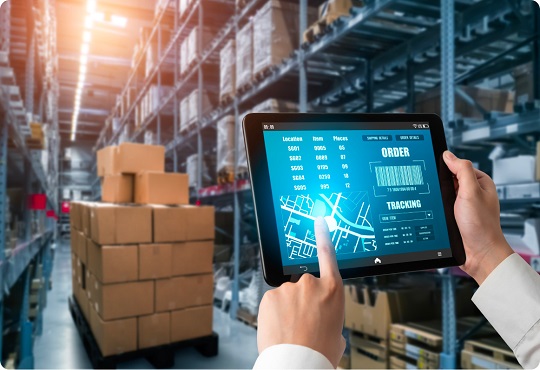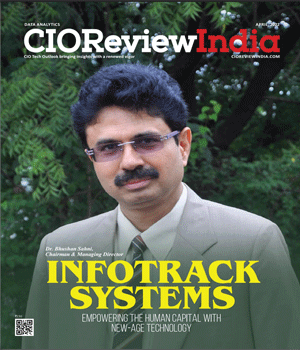
Leveraging Big Data Analytics in Logistics for Business Efficiency
Janifha Evangeline | Sunday, 25 June 2023, 14:42 IST

The complexity of logistics networks has never been higher for many significant B2B businesses. Global operations, which have a rising number of manufacturing facilities and clientele who may be located anywhere on the planet, have given rise to issues that weren't as prevalent earlier. The good news is that now is the best time ever to optimise logistics expenses because there have never been more tools and possibilities available. The majority of B2B players have already made progress in reducing logistics costs on a route-by-route basis. They are skilled at determining the least expensive shipping path from a specific production site to a specific client location.
Logistics is one of the areas of business where big data has created new opportunities. The value of the worldwide logistics market is projected to reach $12,975.64 billion by 2027, according to Allied Market Research. The increase in numbers can be ascribed to logistics companies realising the full benefits of data analysis for streamlining and improving their processes. More bottlenecks are developed at various supply chain locations as logistics transportation and management become more complicated and dynamic, making the sector an ideal use case for big data analytics. Customers, for instance, want more transparency and quicker supplies at reasonable prices. In this article, let us find out how big data can be used to transform the logistics industry and improve business efficiency.
Route Optimization
One of the toughest logistics nuts to crack is route optimisation. This is due to the fact that choosing the optimum paths frequently involves simulating several scenarios. Additionally, minor planning and management errors can result in significant issues that significantly hurt the bottom line of the business.
But by using big data, you may avoid it or at least lessen its effect on your company. To help you decide when to leave, big data and analytics technologies in the logistics industry integrate weather data, cargo data, traffic conditions, and delivery sequences. Additionally, you can designate the quickest delivery route, saving a significant sum of money that could have been spent on petrol.
Big data must be considered throughout the delivery process for route optimisation to be performed properly. These consist of: the regularity of consumer product orders, number of delivery vehicles available, the separation of the pick-up and delivery locations and the most and least orderly areas.
Optimization of the last mile processes
The distance a product travels from the warehouse shelves to the truck and then to the customer's door constitutes the last mile of a delivery service. It's essential for ensuring customer satisfaction and can cost up to 41% of the total supply chain expenditures.
One aspect of logistics operations that benefits greatly from big data is last-mile optimisation. Logistics organisations are better positioned to alter and enhance internal processes and control external elements in almost real-time by analysing data gathered from multiple sources. This boosts delivery process transparency and raises client happiness.
One of the numerous logistics firms using big data to enhance last-minute delivery is DHL. It features a project for crowdsourcing called MyWays. The goal of this innovation is to create a sharing economy similar to Uber. It connects people who want to deliver packages along their regular route for a modest fee to delivery truck drivers using a specially created smartphone app. The platform makes use of big data technologies including complicated event processing and geo-correlation.
Tracking the transportation of goods
Big data has elevated supply chain visibility in the logistics sector above the usual track and trace procedures. Customers and delivery services may now follow the progress of their products in transit and get email notifications anytime the delivery trucks stop.
Big data analytics technology can collect real-time traffic data from GPS devices, RFID tags, and bar codes, making it simpler for logistics managers to plan deliveries conveniently. When a delivery is less than a mile from its destination, these systems can also send automated notifications to receiving facility managers, allowing them plenty of time to prepare and prevent unpleasant surprises.
One of the most recent uses of big data in logistics is the incorporation of Internet of Things (IoT) sensors inside of trailers to allow for real-time monitoring and reporting of temperature, humidity, and other crucial elements. This enables dispatchers to deal with small concerns before they develop into bigger ones.
Warehouse management
Traditional methods of managing a warehouse, such as legacy and ERP systems, are no longer sufficient. Customers today seek real-time updates on the delivery process and information about a product's availability before making a purchase.
The operational efficiency of using big data in warehouse management contributes to some of its allure. By incorporating big data analysis in warehouse management, managers can receive a minute-by-minute overview of activities on mobile devices or desktops. They can identify workflow bottlenecks as a result and find quick fixes.
Big data systems that make use of trillions of sensors analyse data in order to run warehouse operations seamlessly. Among the first companies to deploy this technology for efficient product upkeep in warehouses are Alibaba, Flipkart, and Amazon.
Address Verification & Standardization
Whether you're conducting business locally or abroad, it's critical to get the addresses of your customers correct. Your logistics and business communication operations are rendered inefficient without a reliable method for address standardisation and verification in place.
Sometimes address records are not accurate. When people enter address information, they frequently make formatting and spelling errors. You must standardise and verify the addresses on your record in order to remedy this. Address verification is the process of determining whether an address is real or even existent, whereas address standardisation is the process of updating address information.
You require an address validation programme powered by big data, such as SmartyStreets, to validate and standardise your address. To validate and standardise addresses, this software makes use of online resources and APIs that are completely described.
Big data has significantly changed how logistics operates. Big data can open up enormous prospects for logistics companies, and these businesses are working hard to move closer to making decisions based on data going forward. Big data, artificial intelligence, and business intelligence software all help businesses gather more data that may be utilised to produce insightful analysis.
CIO Viewpoint
Accept Data as an Entity on Balance sheet
By Akshey Gupta, Chief Data Officer, Bandhan Bank
Technology Forecast And Concern In 2020
By Anil Kumar Ranjan, Head IT, Macawber Beekay Private Limited
Data Analytics For Enhanced Productivity And...
By Krishnakumar Madhavan, Head IT, KLA
CXO Insights
Regulatory Implications and Data Protection:...
By Richa Singh
Data-Driven Predictive Technologies
By Pankaj Parimal, Head of Launch & Change Management, Hella Automotive Mexico, S.A. de C.V., Mexico, North America.
5 Mantras That Can Drive Organizations Towards...








.jpg)
.jpg)





